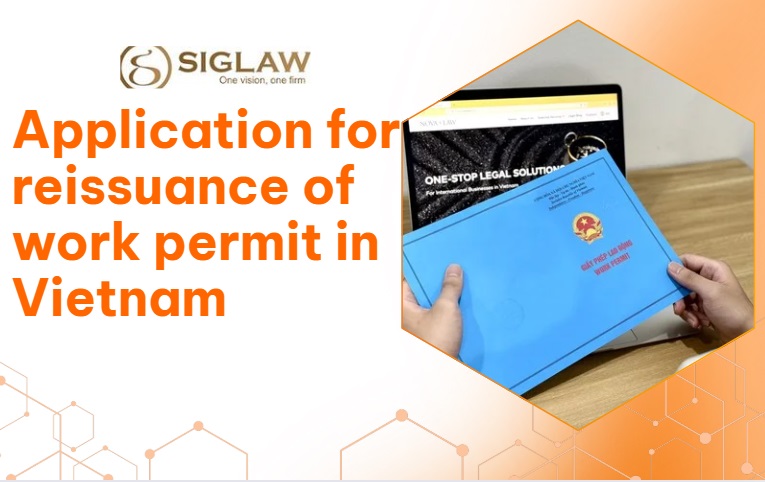Mergers and Acquisitions (M&A) appeared in Vietnam around the 1990s, and this activity has been promoted and grown rapidly since then. Although appearing frequently in mass media, there are many diverse ideas and points of view when it comes to understanding this term. Please see the Siglaw law firm’s article below to better comprehend M&A and some issues related to M&A activities in Vietnam.
VIETNAMESE LAWS ON M&A
From a legal perspective, M&A is a complex investment activity involving many different issues. The legal provisions governing M&A activities are scattered in various specialized legal documents such as the Law on Enterprise, Competition Law, Securities Law, Investment Law…
M&A in accordance with the Law on Enterprise
Law on Enterprises provides the concept and procedures for the merger and consolidation of enterprises. The Enterprise Law 2020 also considers M&A as a type of business reorganization stemming from the needs of the business itself. Although there is not a clear definition of corporate M&A, the Enterprise Law has particular M&A regulations for each type of business, specifically:
Chapter 2, Article 17 (Rights to establish, contribute capital, purchase shares, purchase contributed capital, and manage enterprises) clearly states that organizations and individuals have the right to contribute capital, purchase shares, and purchase capital contributions to the joint-stock companies, one-member limited liability companies, two-member limited liability companies or more, partnerships, except for the following cases:
- State authorities, People’s armed forces using state-owned assets to establish enterprises to serve their interests;
- Officials and public employees are defined by the Law on Officials and the Law on Public Employees.
Chapter 3, for limited companies, Article 51 (Repurchase of contributed capital) and Article 52 (Transfer of contributed capital) specifically provide for several issues related to the transfer of capital contributions of Co., Ltd. members.
Chapter 5, for joint-stock companies, Article 126 (Selling shares) and Article 127 (Transferring shares) indicate that the Board of Directors decides the time, method, and price of selling shares. The selling prices must not be lower than their market values or latest book values, except for special cases.
Article 127 (Transfer of Shares) also stipulates that shares of a joint-stock enterprise are freely transferable. The transfer shall be made into a contract or carried out on the securities market.
Chapter 9 also provides specific provisions on some issues such as division of enterprises (Article 198), separation of enterprises (Article 199), consolidation (Article 200), procedures, dossiers, and registration procedures for enterprises receiving acquisitions (Article 201).
M&A in accordance with the Law on Investment
The Investment Law 2020 recognizes two forms of M&A, namely mergers and acquisitions of enterprises. M&A is considered one form of direct investment. An enterprise acquisition might be a partial or whole acquisition of a company or its branches.
Accordingly, investors have the right to contribute capital, purchase shares, and contribute capital to business organizations (Article 24); Foreign investors can invest in the form of capital contribution, purchase of shares, or capital contribution to business organizations (Articles 25 and 26).
M&A in accordance with Competition Law 2018
The Competition Law 2018 stipulates forms of economic concentration, including mergers of enterprises; enterprise consolidation; acquisitions of enterprises; Joint ventures between enterprises; other forms of economic concentration as prescribed by law. A merger of enterprises is when one or several enterprises transfer all their assets, rights, obligations, and legitimate interests to another enterprise and, at the same time, terminate business activities or the existence of the merged enterprises.
Enterprise consolidation is when two or more enterprises transfer all their assets, rights, obligations, and legitimate interests to form a new enterprise and, at the same time, terminate the business activities or existence of the consolidated enterprises.
Acquisition of an enterprise means purchasing all or part of the contributed capital and assets of another enterprise, directly or indirectly, sufficient to control and dominate the enterprise or a line of business of the acquired enterprise. A joint venture is when two or more enterprises jointly contribute part of their assets, rights, obligations, and legitimate interests to form a new enterprise.
Typically, Article 30 mentions prohibited forms of economic concentration when an enterprise conducts an economic concentration that affects or is capable of impacting competition in the Vietnamese market.
According to the provisions of the Competition Law, the merger, consolidation, and acquisition of enterprises are acts of economic concentration. Therefore, merger, consolidation, and acquisition of enterprises are prohibited in the case of merger, consolidation, and acquisition of enterprises creating a combined market share of enterprises participating in economic concentration, causing or probably causing substantial anti-competitive effects on the Vietnamese market.
M&A in accordance with the Securities Law
The Law on Securities was passed by the National Assembly at the 8th session (XIV session) on November 26, 2019, taking effect from January 1, 2021, replacing the Law on Securities No. 70/2006/QH11 and the Law on Securities. The amended No. 62/2010/QH12 specifically stipulates that the State Securities Commission must approve the division, separation, merger, and consolidation of securities and fund management companies before implementation.
PROCEDURES FOR CARRYING OUT M&A
Here is the step-by-step procedure for carrying out an M&A deal:
Defining goals and building M&A strategy
Before making an M&A deal, developing a strategy and defining goals is the most important step in the merger and acquisition process. Managers and leaders need to have a clear strategy, what they want to achieve from the M&A deal with specific potential goals such as geographical location, profit, and customer source, etc.
Potential target analysis
Then, the leader based on potential goals analyzes each step to build a strategy for each specific criterion. Step 2 is also important in the M&A process because it directly affects the merger’s success.
Planning mergers and acquisitions
The implementation staff will contact businesses that fully meet the management’s requirements for potential targets on the list of M&A. The two sides may need to exchange information and contact each other many times to come up with the most suitable criteria.
Valuation analysis
The next step after the negotiation is to properly assess the current financial situation of the acquired business and analyze it to decide on the right choice for the merger.
Negotiation
This process takes place after properly analyzing and evaluating the potential to come up with several valuation models for the company as a target of mergers and acquisitions. After presenting a reasonable offer, the two parties can negotiate more detailed terms.
Due diligence
This is a very important step to help confirm or adjust the target company’s value by analyzing and checking all factors, such as financial parameters, current assets, liabilities, existing human resources, and existing customers.
Sign an M&A contract
Signing the M&A contract is almost the final stage if nothing is complicated following the discussion and re-evaluation process. The two parties will decide on the sale agreement whether to buy shares or assets.
Financial Obligations
Once the agreement is signed, the investor will receive a new share in the acquiring company’s portfolio or expansion, or may occasionally receive a new class of shares that identify a new corporate entity that an M&A deal has just created.
In the case of a merger where one company acquires another, the acquiring company will pay for the acquired company’s shares in stock, cash, or possibly both.
End of M&A
At the end of the M&A process, the management teams of the acquiring company and the acquired company will work together to merge the two companies. The buyer will usually have to integrate the acquired company as a subsidiary of the parent company or ensure that the other subsidiary can operate independently as a normal business.
TYPES OF CONTRACTS REQUIRED WHEN PERFORMING M&A
Business sale contract
A business sale contract is an agreement between the parties. The seller must transfer part or all of the business to the buyer. The buyer is obliged to pay the seller. The contract may include an agreement on the inheritance of obligations and responsibilities from civil transactions.
The contents of the contract include:
- Name and address of head office of the merging company.
- Name and head office address of the merged company.
- Procedures and conditions for merger.
- Labor use plan.
- Methods, procedures, and time limits for converting assets, capital contributions, shares, and bonds of the merged company into contributed capital, shares, and bonds of the merging company.
- The time limit for merger implementation.
Regarding the legal consequences of the contract: After signing a successful enterprise sale contract and the merging enterprise registers its business, the acquired or merged enterprise will cease to exist as prescribed at Point c, Clause 2, Article 201 of the Law on Enterprise 2020.
Contract for transfer of contributed capital
The capital contribution transfer contract is a very important document in the document system proving the capital contribution of each person in the enterprise in particular and in the management activities of the enterprise in general. Company members or shareholders of the company who want to buy, sell or contribute more capital must approve this type of contract.
The contents of the contract include:
- Name of the company transferring the contributed capital.
- Information about the transferor and transferee.
- Information about the transferable contributed capital and the transfer price of the contributed capital.
- Payment methods.
- Transfer of ownership.
Regarding the legal consequences of the contract: the membership of the transferor of the contributed capital portion will be transferred to the individual or organization receiving the transfer. The capital of the company and the capital ratio of the members of the company do not change according to the provisions of Article 52 of the Law on Enterprise 2020.
M&A Contract
An M&A contract is established when businesses need to merge with each other—the merged enterprise transfers all legal assets, rights, obligations, and interests to the merging enterprise. The M&A is a highly legal document that binds the legitimate rights, obligations, and interests of the parties together and serves as a legal basis to support the settlement of disputes during the performance of the contract.
The contents of the contract include:
- Information of the parties to the merger (merger and merged party);
- Procedures and conditions for business mergers;
- Plan to use labor;
- Time limit and procedures for property conversion, legal rights, obligations, and interests;
- Contract execution time;
- Dispute Resolution Terms;
- The commitment of the parties;
- Validity of contract.
Regarding the legal consequences of the contract: Pursuant to Point c, Clause 2, Article 201 of the Law on Enterprise 2020, after the merging company registers its business, the merged company ceases to exist; the merged company has legal rights and interests and is liable for the merged company’s duties, unpaid debts, labor contracts, and other property obligations of the merged company. Under the merger agreements, the merging enterprises automatically inherit all legal rights, liabilities, and interests of the merged companies.
M&A CONSULTING SERVICE (ADVISING ON MERGERS AND ACQUISITIONS) IN SIGLAW
Currently, many businesses need mergers and acquisitions. However, complicated procedures along with high legal risks can make businesses need to choose a reliable M&A consulting unit. When using Siglaw’s consulting services, negotiation, mergers, and acquisitions (M&A), clients will receive the most enthusiastic support as follows:
| Consultancy | Analysis of forms of M&A, current legal provisions related to business mergers and acquisitions |
| Professional | Based on the purposes of the Buyer and the Seller, Siglaw consults on the most optimal transaction structure in terms of time, legal procedures, and tax obligations. |
| Legal Team | Using the M&A consulting service of Siglaw law firm, clients will be consulted by experts with many years of experience working at Big4, such as Deloitte, AASC, ASCO, E&Y… |
| Advantage | Support to develop M&A strategies for businesses, verify the target company’s legal system, assess risks, and comply with the law |
| Transaction structure | Siglaw conducts drafting or reviewing contracts and legal documents to ensure the most optimal transaction |
| Security | In any case, ensuring the security of customer information is always one of the top priorities |
For a free comprehensive M&A consultation, please contact:
Siglaw Firm
- Head office in Hanoi City: No.44/A32-NV13, Gleximco A, Le Trong Tan Street, Tay Mo Ward, Ha Noi.
- Email: vphn@siglaw.com.vn
- Branch in the South: No.103 – 105 Nguyen Dinh Chieu Str., Xuan Hoa Ward, Ho Chi Minh.
- Central Branch: 177 Trung Nu Vuong Street, Hai Chau District, Danang City
- Email: vphcm@siglaw.com.vn
- Hotline: 0961 366 238









